
Accumulating Epic Yachts
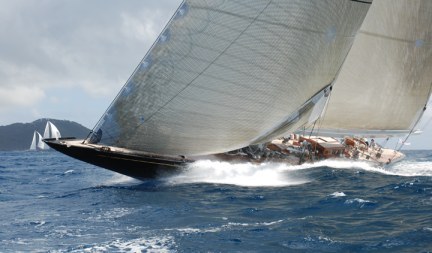
©2016Latitude 38 Media, LLC
The battle for Owner of the Longest Cumulative Total Feet of Epic Sailing Yachts (OLCTFESY) is, to the best of Latitude’s knowledge, between two men who soared from rags — or at least moderate circumstances — to vast riches thanks to enterprises founded in the Bay Area. One did it in various tech enterprises, the other in software. And neither is named Larry Ellison.
The first is Jim Clark, 71, the serial tech entrepreneur behind the likes of Silicon Graphics, Netscape, myCFO and Healtheon. Ages ago we were aboard his Baltic 55 in Puerto Vallarta, but he subsequently really moved up in the sailing world. His first spectacular yacht was the Frers 156 Hyperion built by Royal Huisman, which was reported to be adorned with some of the most famous paintings in the world. He then took a big leap up with Athena, the 292-ft clipper-bowed luxury cruising yacht that is arguably the second largest private sailing yacht in the world — if you ignore the hideous 468-footer that’s recently been launched for Andrey Melnichenko. Then Clark had Huisman build his third large yacht, the 135-ft J Class Hanuman.
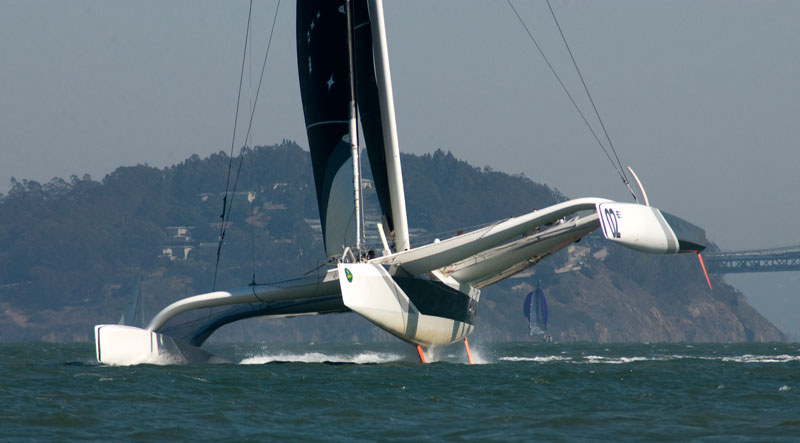
©2016Latitude 38 Media, LLC
Clark is known for being a mercurial guy, so not long after announcing that he didn’t really like sailing in the Caribbean or the Med and putting his two yachts up for sale, he did an about-face. He spent a reported $25 million on the wild 100-ft, all-carbon, all high-tech, VLVP-designed Comanche. Having gotten the complete tour of the boat a couple of weeks ago, we can confirm that no dollar has been left unspent or crew deprivation ignored in the pursuit of every last hundredth of a knot of speed.
We put Clark’s OLCTFESY number at 292+135+100 = 530. As required by OLCTFESY standards, all three of his yachts are in spectacular condition.
The second contender for OLCTFESY honors is Tom Siebel, 63, who made most of his fortune from Siebel Systems, which he sold to Larry Ellison’s Oracle, a company for which he worked for six years. Like Clark, Seibel has lower extremity problems. One of his feet was almost completely bitten off and a thigh gored by an elephant in Africa. You can read about it on Google.
To the best of our knowledge, Tom’s serious sailing fleet started with an ultra-high-tech 45-ft catamaran that he keeps in the Marina Riviera Nayarit. He then went all in on multihulls with the purchase of the MOD70 Orion, which he has sailed across the Bay at just under 50 knots. A very nice guy, Tom was gracious enough to take the Wanderer and Doña de Mallorca for a 34-knot blast across Banderas Bay two winters ago. Siebel has raced Orion in several Rolex Big Boat Series.
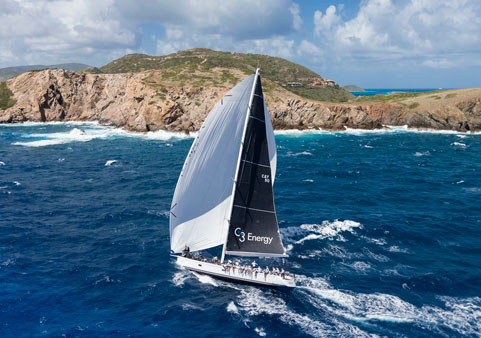
In recent years, Siebel has turned away from the ‘dark side’ with the purchase of three monohulls. The way we understand it, he bought a new Swan 60 for daysails on the Bay, the new Swan 90 Odin for racing in Europe and the Caribbean, which was sort of an interim boat until his Swan 115 could be completed. We’ve been told that Siebel wasn’t happy that the Swan 90 wasn’t really a regatta-winning boat, so although he signed her up for a second St. Barth Voiles in April, he just sold her.
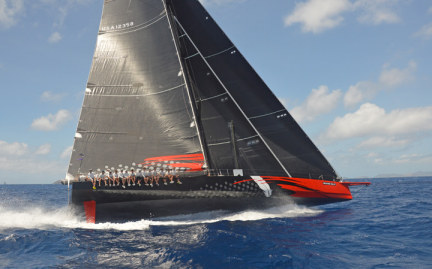
©Latitude 38 Media, LLC
According to the Caribbean megayacht rumor mill, Siebel and Clark went into negotiations about Siebel buying Clark’s J Class Hanuman. Clark had laid Hanuman up for quite some time, and seemingly no longer cared about sailing her. Billionaires are used to getting their own way, so when Clark didn’t think Siebel’s offer was adequate, he, according to at least one source very much in the know, blew the entire negotiations out of the water.
Siebel, who Forbes reports is worth about $2 billion, and thus about twice as much as Clark, took his J Class yacht money elsewhere, buying what was to be the new J Class yacht Firefly. Actually, Firefly had never been accepted by the J Class Association because she was totally stripped-out and didn’t have a proper J Class interior. The owner wanted to add weight in certain areas to make it seem as if she had a proper interior, but the class association would have none of it.
The to-be owner of Firefly stopped making payments to the builder, so Siebel stepped in and bought the hull — on the condition that the about-to-be bankrupted builder would move the hull to the esteemed Vitters yard in the Netherlands. Vitters is to have this boat completed by December or face horrific financial penalties. Once completed, she will undergo sea trials in the Netherlands in December or January. Sea trials in December in the Netherlands? That’s the plan. To be followed by more sea trials in warmer Palma.
Siebel’s buying Firefly rather than Hanuman apparently really got Clark’s competitive juices flowing. Clark immediately took the Hanuman J Class racing program out of idle and put it back on full bore. He reportedly said that he wanted to crush Siebel and his new boat in all J Class events. What fun!
To that end, Clark has ordered a new mast — over a million smackers — and all new sails — about $200,000 per main for Hanuman. Ken Read, Clark’s skipper, reportedly told Clark that he was crazy for wanting to run two such huge sailing campaigns at once. But as Clark’s highly paid skipper — and the supplier of all his sails — Read probably didn’t argue too much.
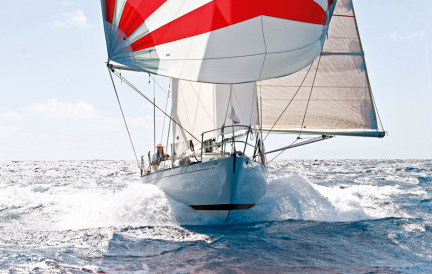
©Latitude 38 Media, LLC
So the way it stands now, four J Class yachts will be taking part in this week’s St. Barth Bucket, but none of them is named Hanuman or Svea. Hanuman should be back in action for fall J Class racing in Newport, with at least five other J Class yachts expected to compete. It will more or less be a tune-up for the big J Class event in Bermuda at about the same time as the America’s Cup next summer. Svea will surely be there. But even that will be a warm up for the J Class World Championships to be held in Newport next fall.
What about Clark’s 100-ft Comanche? Having missed the monohull course record in the Caribbean 600 a few weeks ago, she’ll be doing the Voiles de St. Barth in April and the Newport to Bermuda Race this summer, and making a run on the Transatlantic record in August.
Clark nixed his Aussie wife Kristy’s desire to do a third Sydney Hobart Race this winter in favor of a Cape Town to Rio Race after the Transatlantic record run. But get this: Current plans call for Comanche to do a California to Mexico race in the spring of 2017, followed by the L.A. to Honolulu Transpac record run in July. She would be the favorite for the Barn Door Trophy.
That raises the question of what’s up with George David’s Juan K-designed Rambler 88. Juan apparently told David, who had owned a Juan K-designed 100 until she flipped in the Fastnet Race, that an 88-footer is the maximum size that humans can handle, and thus could not only beat the 100-ft Comanche on corrected time, but on elapsed time, too. That’s proven not to be true, as Rambler has repeatedly beaten Comanche on corrected time, but not on elapsed time.
David is reportedly not happy coming in second, so all kinds of ideas are being thrown around. The wildest of them all: cutting the 18-month-old Rambler 88 into quarters and then rebuilding her longer and wider.
Anyway, as it currently stands, Clark holds OLCTFESY honors, but before long will be eclipsed by Siebel. Unless, of course, there is more boat buying and selling by the two.
Before anybody starts bitching about the wealthy and their yachts, we’d like to point out that Clark and Siebel, like Ellison, made their fortunes not through monopolies or ‘public service’, but by creating businesses that save other companies — and ultimately consumers — lots and lots of money. In addition, they have both been epic philanthropists. Nor can we disregard their financial impact on the sailing industry. The navies required to sail and maintain their yachts are substantial. And the innovative parts they need help the yachting industry prosper. For example, Comanche’s gimbaled carbon-fiber toilet — the only one for a crew of 20 — cost $20,000.
Did we mention that the Bay Area’s Stan Honey, easily one of the top two or three navigators in the world, has already signed on for all the navigation duties on both Comanche and Hanuman? You know what Stan’s been doing when not racing on the world’s fastest monohulls and multihulls? Cruising the Sea of Cortez and mainland Mexico with his wife Sally Lindsay Honey aboard their humble Cal 40 Illusion, which must be at least 50 years old now.
“We’ve absolutely been loving cruising Mexico,” Stan told Latitude in Antigua.
Puddle Jumping from La Paz
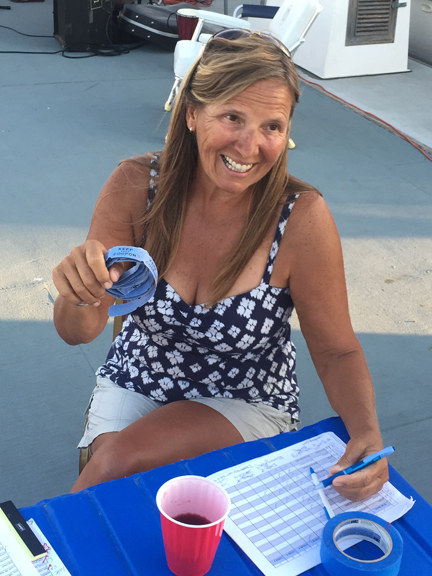
©2016Latitude 38 Media, LLC
Patsy ‘Le Reina de la Mer’ Verhoeven, the nine-time veteran of the Baja Ha-Ha, reports than an unusual number of boats in La Paz are getting ready to Puddle Jump to the South Pacific this year. Based on a meeting in La Paz on Wednesday night, they include:
- Avatar, Peterson 44, Whitestone, VA, Shelly Ward and Mike Rickman.
- Jade, Fuji 45, Anderson Island, WA, Pete Cookingham and son Erick Cookingham.
- Huzzah, Jeanneau 45.2, Gig Harbor, WA, Gerry & Jody Gilbert.
- Cinnabar, Schumacher 52, San Francisco, Tom & Sylvia Seaberg.
- Koza, Jeanneau 49, Brisbane, Australia, Carola Melville & Jim Graham.
- Compañera, Tarten 38, Vallejo, Joel and Laura Sorum.
- Morning Light, Explorer 45, San Diego, Scott Thomas.
- Talion, Gulfstar 50, La Paz, Patsy Verhoeven.
"It’s Interesting to note that three of the crews have lived in La Paz for a period of time," reports La Reina. "Pete for 25 years, Shelly for 11 years, and me for nine years — and we were inspired to do the Puddle Jump at least to some extent by the deaths of our dear friends Paul Whitehouse and Simone Wood of the ketch Tabasco II. The couple tragically perished in La Paz Bay during hurricane Odile in September of 2014. It had been Paul and Simone’s dream to sail to the South Pacific. We will join their families in the Marquesas for a scattering of their ashes ceremony."
Does sailing to the South Pacific mean that Le Reina will miss her first Baja Ha-Ha in a decade? Of course not.
Safety at Sea Now Online
"US Sailing has created an online version of their Coastal Safety at Sea course which allows sailors to take the course without attending an in-person seminar," writes Chuck Hawley, US Sailing’s committee chair for Safety at Sea. "The curriculum was developed based on Gulf of the Farallones racing and the Low Speed Chase incident."
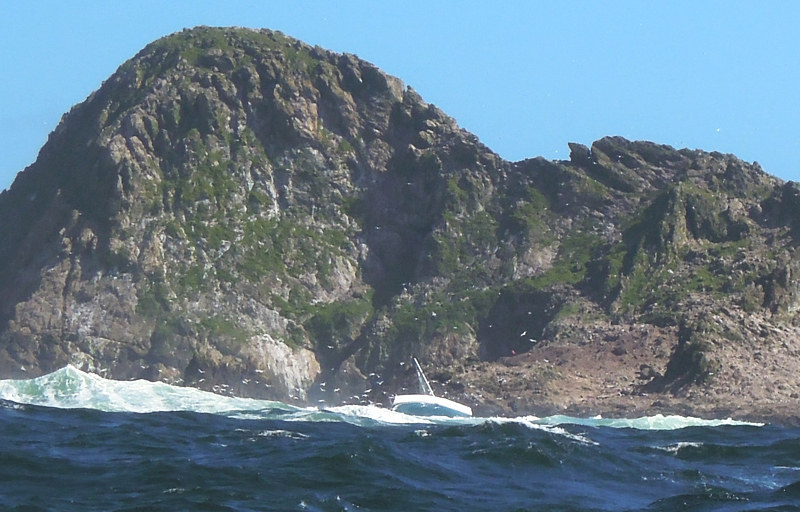
The online course is equivalent to the half-day seminar developed for races in near-coastal waters, including the OYRA series, SSS Half Moon Bay, Drake’s Bay and Singlehanded Farallones, and Windjammers, but not the Spinnaker Cup, Coastal Cup, SoCal 300, or races to Hawaii. The cost is $35 for US Sailing members and $50 for non-members. A Hands-On Online Supplement is available for Coastal Safety at Sea graduates who plan to participate in long-distance races or other ocean passages.
Land-based Safety at Sea seminars this spring in California include the following:
- April 2 — Dana Point YC will host a half-day Coastal Safety at Sea Seminar. Click here for details.
- April 9 — Strictly Sail Pacific, at its new location in Richmond, will host a half-day seminar. The $75 registration fee includes admission to the boat show.
- April 30 — Santa Barbara YC will host a one-day Safety at Sea Course at the Santa Barbara Maritime Museum at a cost of $125 for club members or $150 for non-members. Sign up here.
- May 14 — Encinal YC in Alameda will provide the venue for a one-day course with an optional second day on May 15 for hands-on practice and World Sailing (ISAF) certification, which will feature Dr. Gordon Giesbrecht speaking about hypothermia; Lifesling, flares and storm sails demos; rig cutting in emergency situations; a session in the pool with full gear and liferaft deployment; and fire-fighting training. Registration is through the Pacific Cup, but is open to everyone. Prices go up on May 1 and these seminars tend to fill up, so we recommend signing up early.
BAMA’s Doublehanded Farallones, which occurs on March 26 before any of the above, does not require attendance at a Safety at Sea seminar, but does require no-fee online readings for both skipper and crew. "BAMA also offers an archive of incidents (reportedly unique in the USA) and a skippers meeting to cover relevant topics," says Bob Naber, the DHF regatta chair. See www.sfbama.org.
